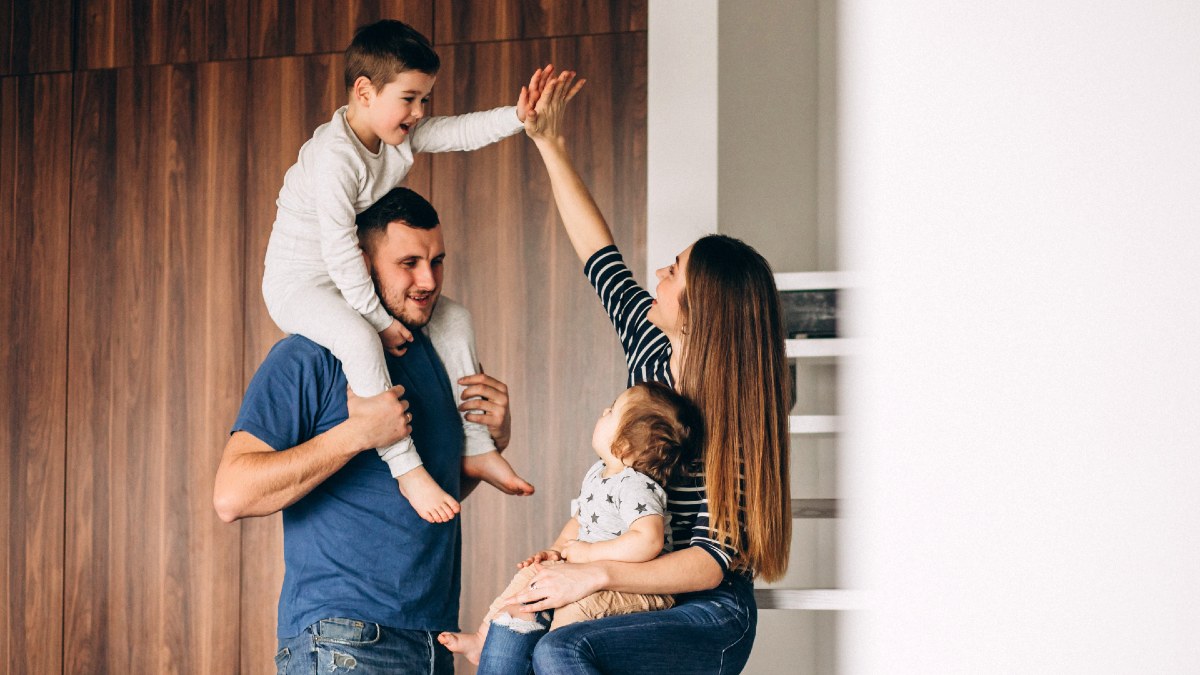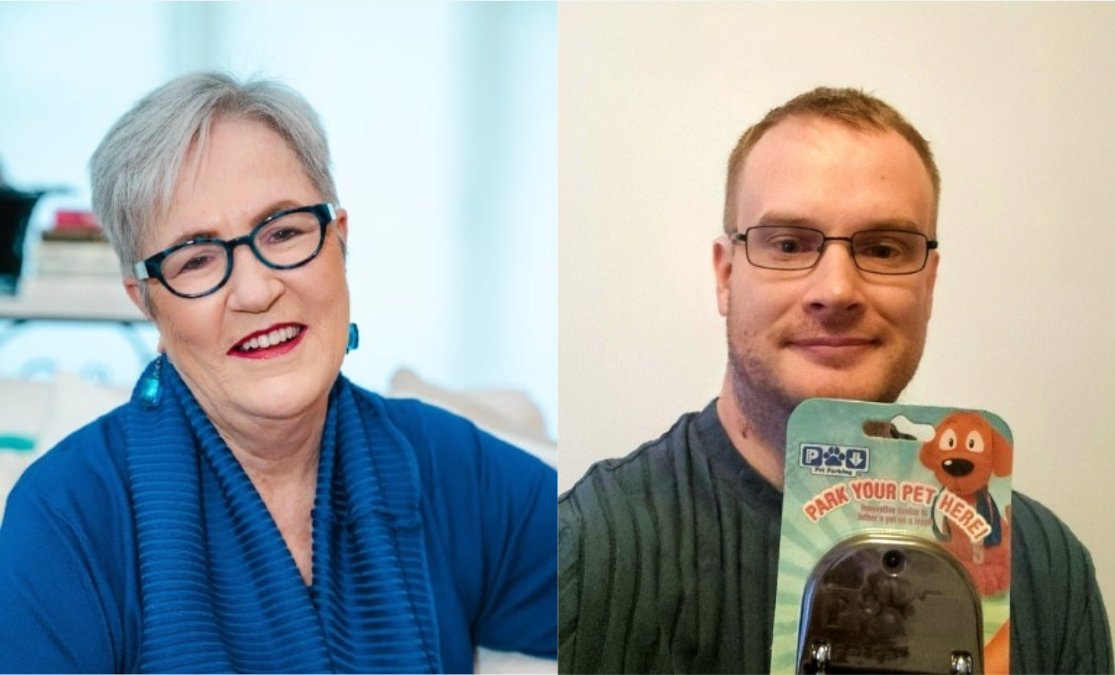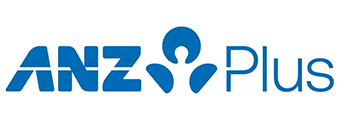
What price can you put on family? Estimates vary wildly, but several studies suggest it's somewhere between $12,000 to $30,000 per child each year, depending on their age and lifestyle.
In 2018, the Australian Institute of Family Studies (AIFS) estimated that weekly costs for a middle-income family raising two young children - a 6-year-old girl and a 10-year-old boy - was about $340, or $170 a week per child. This works out to an annual spend of $8,840 for one kid, covering their food, clothing, healthcare, school expenses, and share of household costs (i.e. housing, utilities).
Before you need to pay for school fees and uniforms, the annual cost is estimated to be around $7,918, per a 2019 report on the cost of having a baby in Australia by IBISWorld. These figures also exclude housing costs.
However, obviously a lot has happened since 2018-19. Mum and author of Kids Ain't Cheap Ana Kresina recently revealed the cost of raising two kids from birth to age 18 has ballooned to nearly $900,000, or $450,000 per child.
"The obvious costs are things like diapers, new furniture, school, and so forth. But then there's a lot of hidden costs," Ms Kresina told the Savings Tip Jar podcast.
"If you have kids, you need to transport them to and from school and whatnot. So there's transportation costs. [Additionally] you're going to need more space potentially, so you might have to move into a bigger rental or a house - that's going to cost you more money," she added.
Ana Kresina talks about the obvious and hidden costs of raising children in Australia.
Having children comes with some major financial considerations. Rising costs and their changing needs over the years can put even financially prepared Aussie parents in a bind.
"Raising kids has been a wild financial ride. Every stage brings something new, and the costs just keep changing as they grow," Melbourne-based father of two, Tyson Butter shared with InfoChoice.
"We tried to save up before out first came along, but it's tough. We had to cut back on little luxuries like eating out and holidays."
And often, even small expenses can add up and push your budget to the edge.
"We thought we were set, but the little things - like wipes and baby clothes, which they grow out of fast - really hit the budget hard," Mr Butter added.
Sure, children are a source of joy, but that happiness doesn't come cheap. If you're considering raising a family in Australia, here's a look at the costs you'll need to factor into your financial planning.
Major Costs to Expect When Raising a Child in Australia
Raising a child in Australia is not all rainbows and butterflies. It's also a steady stream of bills, from childcare to education and everything in between.
Baby essentials
Babies require a lot as they grow. Think nappies, wipes, car seats, furnishings, and clothes they will grow out of in the blink of an eye. According to the IBISWorld report, babies can go through 3,000 nappies in the first year of life, which alone can cost parents around $800 to $1,000 a year.
Add in essential baby gear and items, and you're looking at an initial cost of around $8,000, on top of ongoing expenses.
"That first year can easily hit $10,000 to $12,000, maybe even more," Mr Butter said.
"Between nappies, formula (if you're not breastfeeding), doctor visits, and all the baby gear like prams, car seats, and cots, it adds up quicker than you'd expect."
Healthcare
Basic healthcare, including routine GP appointments and immunisations for children under 16, is generally free under Australia's public healthcare system (Medicare). However, specialist treatments and advanced dental services are not subsidised by the government. Braces alone can cost up to $10,000, which can really bite into your budget.
Here's a list of medical services covered and not covered by Medicare for children under 16:
| Covered by Medicare | NOT covered by Medicare |
|---|---|
|
|
Due to the rising cost of living, which affects medical practitioners too, there may be a growing 'gap' between what Medicare covers and what the doctor charges. Because of this, the number of 100% bulk-billing doctors has declined over the years.
At the start of 2024, the Australian Bureau of Statistics (ABS) found the number of Australians who delayed seeing a GP because of concerns about costs rose over 2022 and 2023 to more than 1.2 million.
You may opt for private health insurance to cover out-of-pocket costs that Medicare doesn't cover, so you can better manage your children's healthcare needs with reduced financial burden. However, private health insurance may not come cheap, and the government has an easy comparison tool on its website.
Childcare
Often the largest expense for Australian families goes to childcare. If you and your partner are working, you'll likely be using your parental leave during the first few weeks. There is no mandatory provision in place for companies to offer leave over and above what's available through the government.
Once you go back to work, more than half or 55% of annual expenses for raising children typically go to paying for a babysitter or daycare.
According to data from the Australian Government's Department of Education and the Productivity Commission, the average daily fee for centre-based daycare is around $134.55, though this can vary significantly based on location.
"You don't realise how much it's going to take out of your budget until you're in the thick of it," Mr Butter shared, saying that childcare was the biggest expense they have had to incur while raising kids.
Fortunately, help is available for parents.
Under the Child Care Subsidy (CCS), eligible families can receive up to 90% of their childcare costs covered, depending on their income, the number and age of children, the activity level of parents, and the type of care used. It applies to approved childcare services such as centre-based day care, family day care, and outside school hours care.
However, while the subsidy improves the affordability of childcare, especially for low and middle-income families who receive larger rebates, the actual out-of-pocket costs can still be substantial.
"Even with rebates, it's still a huge expense, and you sometimes wonder if it's worth going back to work at all," said Mr Butter, who also serves as the general manager of a company that offers a patented pet parking device.
Food and nutrition
After childcare, nappies, and baby gear, food ranks among the highest budget drain of having children in Australia.
Food costs can vary widely. If you are breastfeeding, this will cost less during the first few months and until your baby can eat solid foods. If your kid has food allergies or specific nutritional requirements (e.g. gluten-free, lactose-free), this could significantly stretch your food budget.
And when your kids hit their teenage years, food expenses can spike by 10-20%.
"Teenagers have expensive taste, which means higher food bills," Mr Butter said.
Clothing and footwear
Children outgrow their clothes and shoes faster than you might think. And good quality items often come with a hefty price tag.
"I didn't expect kids' shoes to cost so much!" Mr Butter admitted.
"They grow out of them so fast, and you need new ones for different things: school, sports, casual wear. You think you'll get some mileage out of a pair, and then, boom - they need another size in six months."
The Department of Social Services and AIFS estimate that families spend approximately $500 to $1,000 per year on clothing for their school-aged children. Initial costs of uniforms and shoes can easily set a family back about $300 per child.
Recreational activities
As kids age, they begin to participate in several extracurricular activities or pursue hobbies they're interested in. Studies suggest families spend an average of $1,400 annually for their child's sporting endeavours, a significant cost that pushes half of Australian families to make financial sacrifices to pay for, according to UNICEF Australia's 2022 report.
Over time, the complexity and cost of activities often increase, especially when specialist training, travel for competitions, or advanced equipment is involved.
Technology
Gadgets and other tech needs also find their way into your budget once your children start school. You can expect to spend around $500 to $1,000 annually per child. In addition to the initial cost of devices your kids may need for schoolwork, you also need to factor in ongoing expenses like app subscriptions, software licenses, and insurance or repairs.
Housing
As your family grows, so do your housing costs. Families with children typically need more space, which results in higher mortgage payments or rent. On average, families with children spend approximately $3,000 more per year on housing.
Unsurprisingly, the ABS revealed that families with dependent children, especially those with a mortgage, tend to have higher weekly housing costs compared to childless couples. In 2019-2020, the average weekly housing cost for families with kids was $493, while renters faced similar pressures with an average weekly cost of $415.
Beyond rent or mortgage payments, utilities such as electricity and water also increase as your household expands.
Education: The Biggest Long-Term Investment

Sending your children to school is undoubtedly one of the most significant costs you will incur when raising a child in Australia. They say the potential return on investment in terms of earning potential and personal development makes it worth it, but expect to spend a sizeable amount over the years before your child could 'cash in' on these benefits.
In January 2024, Futurity Investment Group's Cost of Education Index revealed the national average of putting a child through 13 years of school ranges from about $93,000 to $317,000, depending on the location and the type of institution.
| Location | Public | Catholic | Private |
|---|---|---|---|
| Sydney | $94,819 | $188,759 | $377,993 |
| NSW (regional and remote) | $87,762 | $167,695 | $231,118 |
| Melbourne | $108,879 | $194,826 | $324,559 |
| Victoria (regional and remote) | $79,678 | $174,784 | $219,926 |
| Brisbane | $85,177 | $204,197 | $277,015 |
| Queensland (regional and remote) | $72,670 | $163,552 | $208,164 |
| Adelaide | $88,186 | $196,990 | $288,586 |
| South Australia (regional and remote) | $86,677 | $166,086 | $252,068 |
| Perth | $90,785 | $202,286 | $225,728 |
| Western Australia (regional and remote) | $74,979 | $175,413 | $209,847 |
| Canberra | $81,564 | $208,871 | $290,910 |
| Tasmania | $72,083 | $161,042 | $223,415 |
Source: Futurity Investment Group, 2024
Where Should I Send My Kid to School?
It all depends on your financial situation, the specific needs of your child, and what your family deems important.
Public schools are the most affordable option as they are government-funded, making them accessible for many families. These typically cater to a diverse range of students and often have large class sizes, ranging from around 23 to 26 in primary school and up to 30 or more in secondary school.
Private or independent schools, on the other hand, are known for their smaller class sizes, more extensive extracurricular programs, and enhanced facilities. However, these come at a price, making them the most expensive option for families.
Catholic or religious schools offer a middle ground. These usually charge lower fees than independent schools and have a stronger focus on values-based education often tied to a specific faith tradition. However, being of that faith usually isn't a prerequisite to going there, and many schools have moderated their religious teachings.
Mum and now grandma, Virginia Baker Woolf opted for private schools for her children.
"My children went to Reddam House [Sydney's eastern suburbs] and they formed foundational life skills like being able to research, plan, and develop a great work ethic which they still honour. Regardless of the cost, I would still choose private schooling," she shared.
Ultimately, the decision should be based on which environment you believe will best support your children's overall development.
"As a parent, you need to think about what's most important to you. Paying for private school fees might be something you really value. Or you might be someone who want to do camping trips with your family, and spending money and time on that is what you value more," Ms Kresina said.
Government Assistance Programs for Australian Families
The Australian Government offers a range of financial support and tax concessions to help families manage the cost of raising children. These programs are designed to ensure families and their kids get access to essential services such as education, childcare, and healthcare.
Family Tax Benefit
This program is a two-part payment designed to help eligible families with the cost of raising children. Family Tax Benefit (FTB) Part A helps with the day-to-day costs, and Family Tax Benefit (FTB) Part B provides additional assistance to single-parent or two-parent families with one main income earner.
The amount depends on the family's income and the number of children. The maximum fortnightly payment for FTB Part A is $222.04 per child for children under 13, and $288.82 per child for children aged 13 to 15. Families may also receive a yearly supplement of up to $916.15 per child if eligibility requirements are met.
Meanwhile, the payment rate for FTB Part B varies based on the age of the youngest child. If the child is under 5, the maximum fortnightly payment is $188.86. For children aged 5 to 18, the maximum is $131.74. It's income-tested on the secondary earner's income. Supplement payment for eligible families is up to $448.95 per year.
Family Home Guarantee (FHG)
A program under Housing Australia's Home Guarantee Scheme (HGS), the Family Home Guarantee (FHG) supports eligible single parents with at least one dependent child to buy a home with as little as a 2% deposit without having to pay lenders mortgage insurance (LMI).
Every financial year until 30 June 2025, a total of 5,000 places are opened for applicants. Other schemes under the HGS include the First Home Guarantee (FHBG) and the Regional First Home Buyer Guarantee (RFHBG).
Child Care Subsidy (CCS)
The Child Care Subsidy helps families with the cost of childcare. The amount depends on the combined family income, the number of hours parents work, study, or volunteer, and the type of childcare used. From July 2023, the maximum subsidy has been increased to 90% for low-income families.
Paid Parental Leave Scheme
The Australian Government's Paid Parental Leave Scheme provides up to 20-26 weeks - depending on year of birth - of paid parental leave to the primary carer of a newborn or recently adopted child. This is irrespective of gender and can be split however the two parents decide.
Child Dental Benefits Schedule (CBDS)
This scheme offers up to $1,095 over two calendar years for basic dental services for eligible children aged 0 to 17. Services covered include examinations, X-rays, cleaning, fillings, and extractions.
Private Health Insurance Rebate
Families who have private insurance can access this income-tested rebate to help reduce premium payments.
Carer Allowance
The Carer Allowance provides fortnightly payment of $153.50 to individuals caring for someone who needs daily support, including parents caring for children with disability or medical conditions.
How To Financially Prepare for Raising Kids in Australia
Planning and making informed financial decisions can help reduce stress and create a stable foundation for your growing family.
 Virginia Baker Woolf (left) and Tyson Butter (right) share their experiences and insights on raising children in Australia. (Images supplied)
Virginia Baker Woolf (left) and Tyson Butter (right) share their experiences and insights on raising children in Australia. (Images supplied)
1. Plan for all child-rearing costs
Think of all the essentials and decide which you and your child will use, from nappies and prams to car seats and childcare, so you can plan early and manage cash flow. Make sure to do this before your kid arrives at your home. Researching which brands to use can be challenging if you're already overwhelmed with feeding, crying, and diaper changing.
"If you understand the cost of raising a child, you can make important decisions in advance. You can start saving, create a support network, develop a budget, and find affordable housing," said Ms Woolf, who is also a women's money mindset coach.
2. Maximise government benefits
Take advantage of financial support and concessions offered by the government. Be sure to check your eligibility for FTB Part A and Part B, as well as other benefits. Though they may not be enough to lift the financial weight of having a baby and raising them to be a capable adult, they could provide a bit of help at least.
"Childcare rebates are decent, but even with them, it's still expensive. Family Tax Benefits help a bit, but not enough to make a huge dent," Mr Butter shared.
"It's tough to keep up with rising costs, and more government support would definitely make a difference."
And since government support programs are usually income-tested, many Australian families in the middle to higher income brackets are not able to benefit from them. Other eligibility requirements also pose a challenge for parents expecting to receive subsidies.
3. Prepare for education expenses
Start an educational savings fund even before your child learns to walk. Note that education is a costly investment, especially if you're considering private schooling. And even if your child attends a public school, there are additional costs like uniforms, textbooks, and extracurricular activities that can add up.
4. Set up an emergency fund
Unexpected costs are a reality of life, and, even more so, of raising children.
"Setting up an emergency fund is critical because kids always come with unexpected costs - whether it's medical bills or replacing something they've broken (and they break a lot of things)," Mr Butter said.
Read Also: Why You Need An Emergency Fund
An emergency fund can help you manage these unplanned expenses without disrupting your household budget or taking so much of the joy out of raising a family. It's recommended to have at least three to six months of living expenses saved for emergencies. It's also best to keep your rainy day fund in an accessible and high-interest savings account.
Bank Savings Account Base Interest Rate Max Interest Rate Total Interest Earned Introductory Term Minimum Amount Maximum Amount Linked Account Required Minimum Monthly Deposit Minimum Opening Deposit Account Keeping Fee ATM Access Joint Application Tags Features Link Compare Promoted Product Disclosure
then 1.55% p.a.
Rate varies on savings amount.
Rate varies on savings amount.
An earlier version of this article was written by Jason Bryce
Header photo by senivpetro on Freepik; in-text photo by Max Fischer on Pexels



